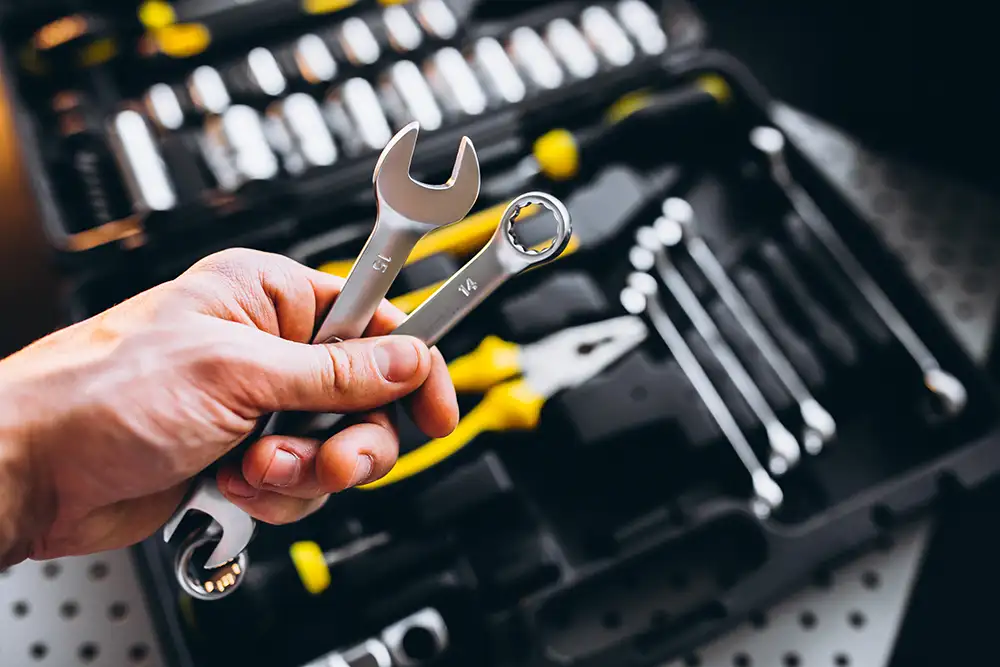Manufacturing plant maintenance: role and benefits
Correct and regular maintenance plays a fundamentally important role in manufacturing plants and industrial environments in general, as it contributes to ensuring safety at work 1, the efficiency of industrial plants and thus the reduction of costs associated with breakdowns and unplanned downtimes, and consequently an increase in company productivity.
.
A good plant maintenance strategy requires careful planning, dedicated resources and adequate tools, and has as a prerequisite the training and involvement of personnel.
Maintenance interventions in a production company are classified into different categories, depending on various factors: the objective, frequency and methodology. The identification and integration of one or more of these types varies according to the effectiveness and benefit deriving from each specific context.
The main categories of industrial maintenance are as follows:
1. EMERGENCY M. or BREACKDOWN M.
Objective:
To respond quickly to a critical failure that significantly affects operations or safety.
This type of intervention is highly reactive and occurs in unexpected situations that require immediate action.
2. CORRECTIVE M.
Objective:
To repair a fault or defect that has occurred in an equipment or system.
This intervention takes place after the fault has occurred, and is often unplanned. It can lead to unplanned downtime.
It is a repair policy whereby the maintainer only intervenes when the fault has occurred. It is an obsolete and increasingly infrequent model in favor of preventive and predictive maintenance.
3. PREVENTIVE M.
Objective:
To prevent failures before they occur, on the basis of a schedule or regular intervals.
It includes activities such as scheduled inspections, lubrications, adjustments and replacements to reduce the risk of failure.
4. PREDICTION M.
Objective:
To predict when a failure might occur using data analysis and condition monitoring.
Using techniques such as vibration analysis, thermography and oil analysis to identify early signs of wear or failure.
Together with detection-based maintenance, which makes use of IoT (Internet of Things) technologies and the use of sensors and other technologies to continuously monitor the condition of a piece of equipment in real time, predictive maintenance is a new policy adopted by Industry 4.0 in which, thanks to the continuous acquisition of data, it is possible to predict when a piece of machinery might fail.
In this way, interventions are made long before this happens, resulting in an overall lowering of repair costs.
5. PROACTIVE M.
Objective:
To focus on the root cause of failures in order to eliminate the conditions that could lead to their occurrence.
This approach seeks to improve processes and materials to prevent wear and tear before it occurs.
6. PLANNED M.
Objective:
A type of regularly scheduled intervention, but based on time or usage intervals rather than the actual state of the equipment.
This method can lead to over- or under-maintenance as it does not consider the actual condition of the equipment.
7. PERFECTIVE M.
Objective:
To plan an intervention to improve or optimize the performance of a work process or machine.
These are overhaul operations that are not dependent on faults or malfunctions, as is the case with corrective maintenance.
The benefits relate to the correction of errors and an increase in performance. This cannot be done without an accurate cost-benefit analysis and a careful estimation of company resources because the costs of such interventions are not always sustainable.
Maintenance declines through various types of interventions that are carried out through a series of fundamental steps:
- Assessment and Inventory
– Compile a detailed inventory of all company assets in need of maintenance, including machinery, vehicles and infrastructure.
– Assess the status and needs of each asset to establish priorities and frequencies. - Development of a Maintenance Plan
– Define a preventive plan based on the history of past interventions and the manufacturer’s recommendations.
– Allocate resources (time, budget, personnel) for each planned maintenance activity. - Using a Maintenance Management System
– Implement a computer-aided management system or dedicated software to track and schedule operations.
– These tools can help monitoring the status of assets, schedule intervention intervals, and keep a history of activities. - Scheduling and Prioritisation
– Schedule regular interventions, considering production needs to minimise the impact on operations.
– Prioritize based on the criticality of assets and their impact on production in the event of downtime. - Staff Training
– Ensure that staff receive continuous training on the latest methods and technologies.
– Incorporate preventive practices into the corporate culture. - Partnerships with External Suppliers and partners
– Establish relationships with external service providers for specific equipment requiring specialised skills.
– Evaluate specific contracts that can offer beneficial services at predictable costs. - Monitoring, Analysis and Optimisation
– Monitor key performance indicators (KPIs) to assess the effectiveness of maintenance interventions.
– Carry out periodic analyses of collected data to identify areas for improvement.
– Optimise the maintenance plan on the basis of results and feedback. - Reviewing and Updating the Plan
– Periodically review the plan to ensure that it remains aligned with evolving business needs.
– Add new assets to the inventory and update plans according to the latest information and technology.
By implementing a regular and structured maintenance strategy, product quality and environmental impact can also be significantly improved.
Indeed, the Industry 4.0 company ‘raises the bar’ and sets new goals to achieve, such as increasing energy savings and protecting the environment2.
In fact, the benefits of a good maintenance strategy extend far beyond the boundaries of the industrial plant, beyond the company’s goals and performance, into a broader perspective of shared value generation and sustainability.
